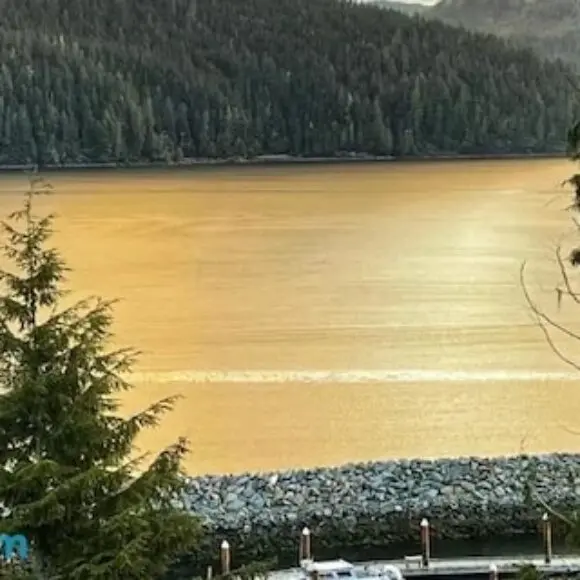Hotel Port Renfrew Oceanfront Retreat

Port Renfrew Oceanfront Retreat
Hotel Port Renfrew Oceanfront Retreat reviews
Planning your ferry trip from Port Renfrew? Stay at Port Renfrew Oceanfront Retreat; rated and is available from CAD $ 224. Port Renfrew Oceanfront Retreat is perfectly situated near the ferry routes, and can be reserved directly through Trivago.
📍 Address Port Renfrew Oceanfront Retreat
Baird Road 204A, V0S 1K0, Port Renfrew, Canada
FAQ
Are there walk-on passenger options from Langdale to Horseshoe Bay on the ferry Vancouver?
Yes, the Langdale to Horseshoe Bay ferry Vancouver route provides convenient walk-on passenger options. This is a popular choice for those who do not need to transport a vehicle. For current pricing and information about walk on fares it is best to review the Langdale to Horseshoe Bay walk-on fares page. Walk-on passengers can enjoy the scenic views and onboard amenities without the need for a vehicle reservation.
Can I bring a bicycle on the ferry Vancouver from Denman Island (Hornby Island) to Buckley Bay?
Yes, bringing a bicycle on the ferry Vancouver from Denman Island (Hornby Island) to Buckley Bay is generally permitted. However, it’s advisable to review the specific guidelines and any potential restrictions by visiting the Denman to Buckley Bay bicycle transport page. Bicycles are typically boarded as foot passenger cargo, and it is best to arrive early.
Ferry Vancouver
Environmental initiatives by ferry operators focus on reducing emissions and protecting the sensitive marine ecosystem of the Salish Sea. Modern vessels incorporate fuel-efficient technologies and waste reduction programs. Passengers can contribute to environmental protection by following onboard recycling and conservation guidelines.
Emergency procedures and safety protocols ensure passenger security throughout ferry crossings. Modern vessels feature comprehensive safety equipment and trained crew members. Regular safety drills and equipment inspections maintain the highest safety standards for all passengers and vehicles.
Fuel and vehicle services are available at some ferry terminals, allowing travelers to prepare for their Vancouver Island adventure. Terminal locations often feature gas stations, convenience stores, and automotive services. Pre-trip vehicle inspections ensure safe travel on Vancouver Island’s diverse road conditions.
Business travelers find ferry services convenient for Vancouver Island meetings and conferences. Many vessels offer business centers with WiFi and quiet work areas. The relaxing ferry journey provides a welcome break from driving while maintaining productivity during travel time.
Multi-day Vancouver Island itineraries often begin with ferry travel from the mainland, allowing tourists to explore the island’s diverse regions. Popular destinations include Victoria’s Inner Harbour, Tofino’s surf beaches, and the wine regions of the Cowichan Valley. Ferry connections enable comprehensive island exploration combining urban and wilderness experiences.
Accessibility features ensure all passengers can enjoy ferry travel, with elevators, wheelchair-accessible restrooms, and designated seating areas. Vehicles with accessibility equipment receive priority boarding assistance. Ferry staff provide support for passengers with mobility challenges throughout the journey.
Seasonal variations significantly affect ferry operations, with summer bringing increased frequency and capacity to handle peak tourist demand. Winter schedules may have reduced sailings, while spring and fall offer moderate crowds with pleasant weather. Holiday periods require advance planning due to extremely high demand for popular routes.
Food and dining onboard ranges from casual cafeterias to full-service restaurants depending on the vessel and route. Local British Columbia ingredients feature prominently in menu offerings. Passengers can also bring their own food and enjoy meals in designated dining areas or outdoor spaces.
Group travel accommodations are available for tour operators, schools, and large organizations visiting Vancouver Island. Group rates and special arrangements can be coordinated for enhanced travel experiences. Motor coach tours frequently utilize ferry services as part of Pacific Northwest touring packages.
Onboard amenities enhance the ferry experience with restaurants, cafeterias, gift shops, and comfortable seating areas. Many vessels feature outdoor viewing decks perfect for photography and wildlife watching. Children’s areas, business centers, and quiet lounges provide options for different passenger preferences during the crossing.




